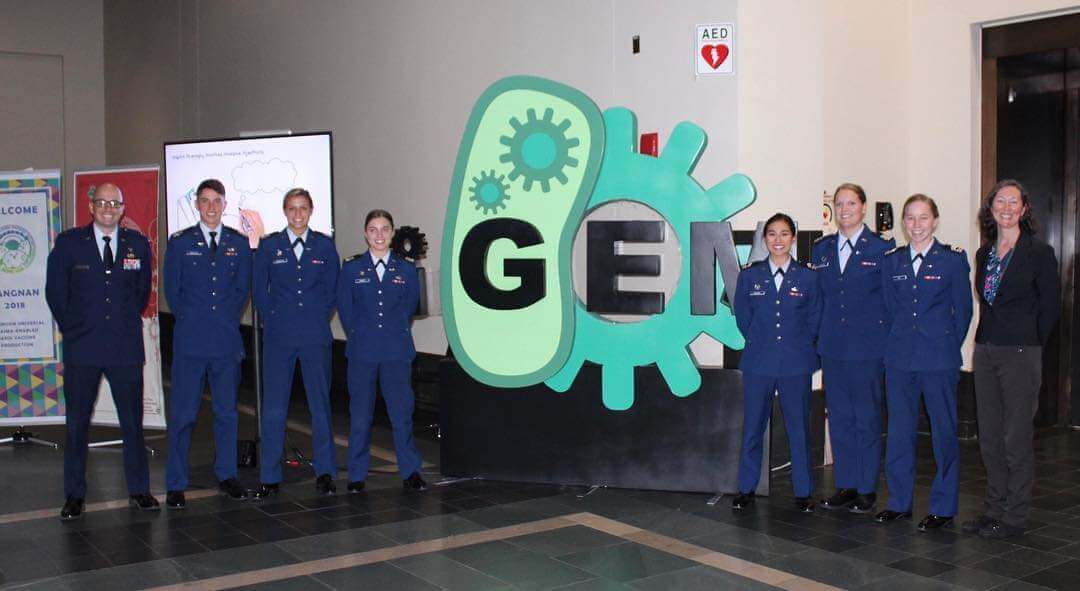Cadets earn bronze medal at genetic research competition in Boston

A team of cadet researchers from the U.S. Air Force Academy took the bronze medal at the International Genetically Engineered Machine Competition in Boston, Oct. 24-28, 2018. (Courtesy photo)
By Ray Bowden, Oct. 30, 2018
U.S. AIR FORCE ACADEMY, Colo. — Cadets took the bronze medal at the International Genetically Engineered Machine Competition in Boston, Oct. 24-28.
The Air Force Academy cadets won the award with a research project with potential to curb fungal infections often found in bullet or shrapnel wounds and other traumatic injuries.
“Our purpose was to try and understand why yeast becomes infectious in the human body, not only because of infections, but because Americans are dying from secondary infections when returning injured from the Middle East, said Cadet 1st Class Annmarie Flatten, one of several cadet researchers who worked on the project.
Flatten said it felt great to win the bronze.
“This was our goal from the beginning,” she said. “A lot of teams, especially first-year [research] teams, struggle to even make that benchmark. “
Flatten, Cadets 1st Class Tamera Cardenas, Annamarie Flatten, Mark Muller and Heather Zimmie, with Cadets 2nd Class Erica Lee, Amanda Madrid and Anna Mendenhall, worked with Dr. Katherine Bates, a biology professor at the Academy, and Capt. Michael Barnhart, a biology instructor at the Academy, for 10 months. Their project is called “Ops Normal: A novel protein sequestration sequence to prevent a phenotypic switch in Candida albicans.”
“Our team combined genes together because at each end, the piece has a sequence that was complimentary to only the one other sequence we wanted,” Flatten said. “It’s more like zipping a zipper or pieces of a puzzle fitting together.”
Bates said the cadets developed a genetic “sensor” to detect and control Candida albicans, “the causative agent of many traumatic-wound secondary infections.”
“These infections are very hard to treat and don’t respond to antibiotics,” she said.
Project research took place at the Air Force Academy and the Air Force Research Laboratory at Wright-Patterson Air Force Base, Ohio. The cadets worked with other service academy researchers and students from Colorado State University at Fort Collins and Carrol High School in Dayton, Ohio.
This was the first time Academy cadets competed at the event in Boston. More than 350 teams competed, Bates said.